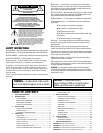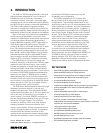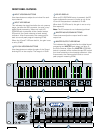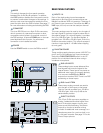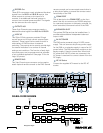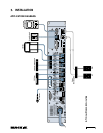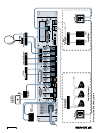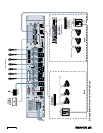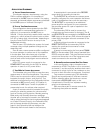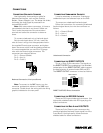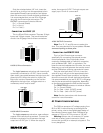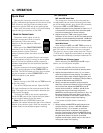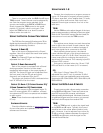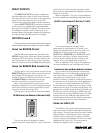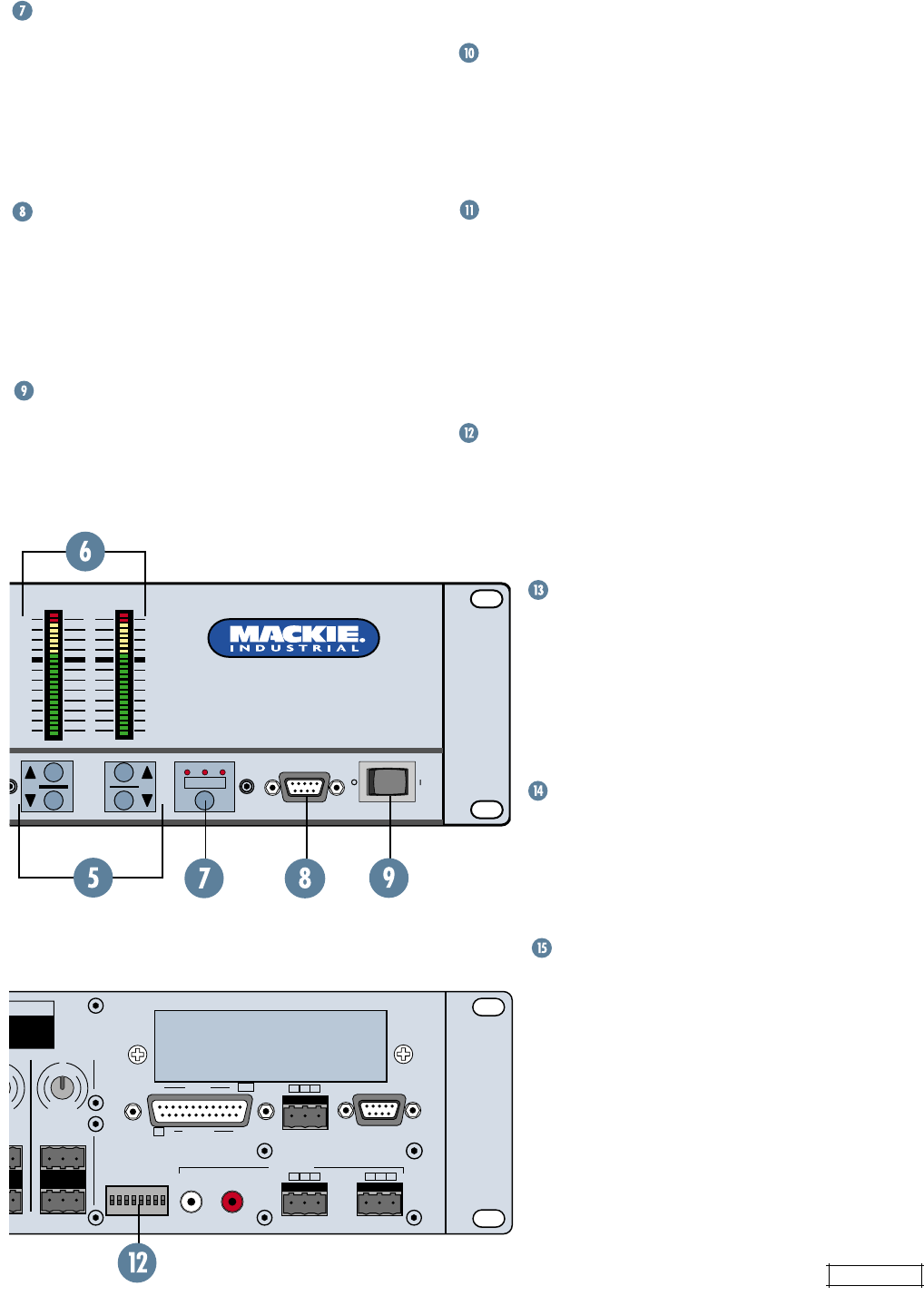
DX8 – 5
2
OL
4
7
10
15
20
25
30
35
40
50
A B LOCK
MODE
POWER
COMM PORT
BA MASTER
DX8 DIGITAL MIXER
B
REMOTE BUS
A
RECORD
A
B
OUTPUTS
LOGIC I/O
TRIM
8
M
I
C
G
A
I
N
0
60
T
URING DATE
COMM PORT
12345678
LINE
MIC
-
30dB +30dB
U
N
0
0
dB
PHANTOM POWER
48V DC
12 1 +5V
11G1
G
+
–
G
+
–
G
+
–
INPUTS
OUTPUTS
ON
MODE
This switch changes the front panel operation
between Bus A and Bus B operation. In addition,
the
LOCK
position disables the front panel controls
to prevent unauthorized changes to the settings. A
security code must be entered to enable the front
panel controls when the DX8 is locked. See page 17
for more information on locking and unlocking the DX8.
COMM PORT
This is an RS-232 port on a 9-pin D-Sub connector,
which connects to a personal computer or other
compatible control system for external control of
the DX8 settings. A second
COMM
port on the rear
panel duplicates this function, for permanent
connection to an installed controller.
POWER
Use the
POWER
switch to turn the DX8 on and off.
REAR PANEL FEATURES
INPUTS 1-8
Each of the eight analog inputs has separate
balanced mic and line input connectors that use
Mackie’s acclaimed XDR mic preamps. These are 3-
pin Phoenix-type connectors. Use either the
MIC
or
LINE
input, but only one can be used per channel.
TRIM
This rotary analog control is used to trim the gain of
the input signal for optimum signal-to-noise ratio in
the preamp stage. For mic-level signals, it provides
from 0 to +60 dB of gain. For line-level signals, it
provides from –30 dB to +30 dB of gain, with unity
(0 dB) at the center position. This control accepts a
maximum input signal of +18 dBu before clipping
(at unity gain).
PHANTOM POWER
These switches apply phantom power (+48 VDC) to
pins 2 and 3 of the selected mic input connectors.
Switch the
PHANTOM POWER
switch in the UP
position for an individual channel when using a
condenser microphone.
BUS A/B INPUTS
These analog inputs accept balanced line-
level signals and route the signal to the
internal buses. These inputs may serve as
additional zone inputs for program devices,
or to connect the
BUS A
and
BUS B
outputs from another DX8. There is no DSP
processing on these inputs.
BUS A and B TRIM
These rotary analog controls are used to
trim the gain of the inputs to the buses.
This trim control provides from –20 dB to
+20 dB of gain, with unity (0 dB) at the
center-detent position.
DIRECT OUTPUTS
This 15-pin D-Sub connector supplies an
analog, unbalanced line-level signal from
each of the eight program inputs, post-
preamp and pre-processing. Use these
outputs to connect to another mixing
console for additional zone coverage, to a
telephone system for music-on-hold, or to
a multi-track recorder. See page 12 for the
Direct Output pinouts.




